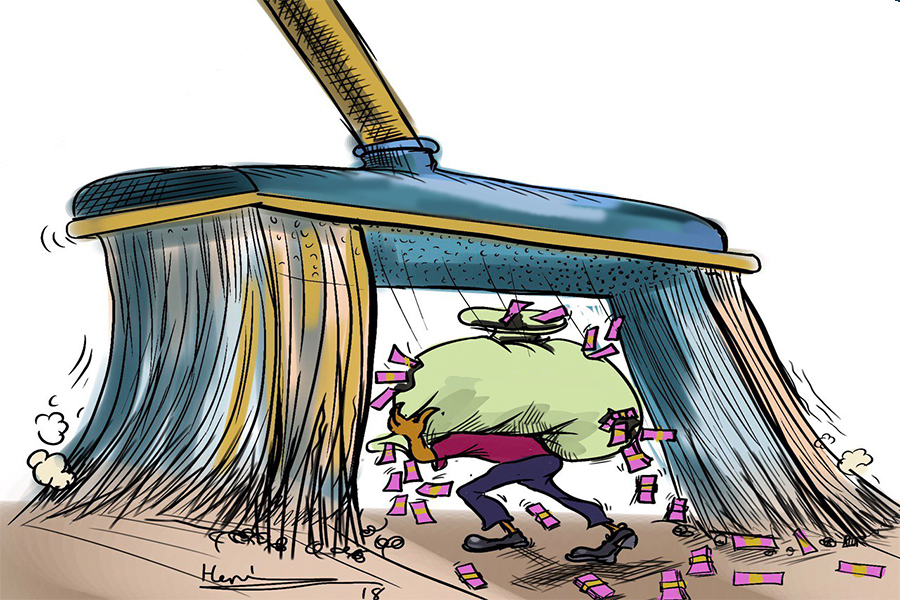
Photo Gallery | 180536 Views | May 06,2019
Mar 30 , 2025
By Bula S. Wayessa
In the nearly three decades since the "Lost Crops of Africa" series urged attention to indigenous agriculture, the trajectory of crop cultivation in southwestern Ethiopia offers valuable lessons. Emphasising indigenous crops does not mean abandoning maize but integrating both into a holistic agricultural strategy. Through this balanced approach, Ethiopia, and by extension, Africa, hopes to achieve genuine food security, ecological sustainability, and preservation of its rich agricultural heritage, argues Bula S. Wayessa (bwayessa@umn.edu), a professor of African American and African Studies at the University of Minnesota.
Nearly three decades ago, the U.S. National Research Council published a landmark series titled "Lost Crops of Africa", spotlighting the continent’s rich agricultural diversity. Its purpose was clear. The series discussed the indigenous African crops that could potentially feed not only Africa, but the world. While some advances have occurred since, many of these native crops still lag behind non-native industrialised species, largely overshadowed and underdeveloped.
Southwestern Ethiopia vividly illustrates this issue. The region is renowned for its agricultural diversity, with deep-rooted traditions cultivating crops like teff, sorghum, finger millet, maise, and Arabica coffee. Yet today, maise, a crop introduced from the Americas during the Columbian Exchange in the 17th Century, is rapidly replacing traditional staples such as teff and sorghum. The change signals broader environmental, economic, and cultural shifts, reshaping subsistence farming in the region.
The swift adoption of maise in southwestern Ethiopia is not unexpected. Maise readily adapted to existing farming practices based on shifting cultivation, clearing and burning land before seasonal rains. Local processing techniques using wooden pestles and mortars or traditional grinding stones adapted smoothly to maise, making its integration into local diets effortless. Maise-based foods, including bread and roasted maise snacks, are commonplace.
However, the dramatic expansion of maise cultivation has disrupted traditional agricultural patterns. Indigenous crops like teff and sorghum, grown in the region for centuries, are now struggling to compete against maise’s higher yields and shorter cultivation cycles. Environmental factors also increasingly favour maise. Teff, for instance, is highly vulnerable to climate changes, particularly rising fungal diseases and reduced productivity. Maise, by contrast, is more resilient and thus more attractive to farmers facing environmental uncertainties.
Another major advantage for maise lies in the availability of agricultural inputs. Farmers have easier access to improved maise seeds and fertilisers, largely due to substantial support from agricultural research institutes and government programs. This institutional backing has widened productivity gaps between maise and indigenous crops, further affirming maise’s dominance. As maise expands, local biodiversity suffers, diminishing the region’s rich crop variety.
Economic and cultural shifts further compound maise’s advantage.
Traditional crops like teff, sorghum, and millet are labour-intensive, prompting farmers — many of whom balance subsistence farming with other livelihoods — to prefer maise for its relative ease of cultivation. Ethiopia’s economic liberalisation has led to opportunities in small towns, drawing labour away from intensive farming. Thus, maise's appeal is derived partly from practical considerations around labour availability.
Cultural practices also influence crop choice. While traditional dishes prepared from teff, millet, and sorghum still hold cultural value, maise has become deeply integrated into daily meals, reinforcing its prominence in local agriculture. Farmers often maintain a mix of native grains and maise, but increasingly, maise is prioritised due to its convenience and reliability.
Despite its advantages, maise's dominance in Ethiopia presents serious risks. Its expansion threatens indigenous crops crucial for maintaining agricultural biodiversity and long-term sustainability. The concentration on maise, primarily driven by higher yields, climate resilience, and better institutional support, has inadvertently undermined the cultivation and development of native species.
This phenomenon mirrors broader agricultural trends across Africa, where non-native crops frequently overshadow indigenous varieties. The push for high-yielding crops like maise forms part of wider strategies to respond to food insecurity, yet this approach often overlooks the importance of Africa's agricultural heritage. Prime Minister Abiy Ahmed (PhD) pointed out this trend during his acceptance speech for the 2024 Agricola Medal, emphasising Ethiopia’s increased focus on "high-value and industrial crops." While economically sensible, such prioritisation potentially sidelines crops critical for local communities.
The shift toward maise cultivation in southwestern Ethiopia encapsulates broader trends of agricultural adaptation and shifting priorities. Though maise’s initial adoption offered immediate advantages, with higher productivity, resilience, and ease of cultivation, the long-term consequences should raise concerns. If current trends persist, the rich diversity that once defined the region’s agriculture may face severe erosion, compromising food sovereignty and resilience against future environmental changes.
A more balanced approach, recognising and actively promoting indigenous crops alongside maise, is needed to safeguard Ethiopia's agricultural future. Such a balance would sustain ecological diversity and preserve the cultural practices intertwined with native crops. Promoting indigenous species could strengthen resilience against climate variability, ensuring long-term food security.
PUBLISHED ON
Mar 30, 2025 [ VOL
25 , NO
1300]


Photo Gallery | 180536 Views | May 06,2019

Photo Gallery | 170729 Views | Apr 26,2019

Photo Gallery | 161807 Views | Oct 06,2021

My Opinion | 137291 Views | Aug 14,2021

Dec 22 , 2024 . By TIZITA SHEWAFERAW
Charged with transforming colossal state-owned enterprises into modern and competitiv...

Aug 18 , 2024 . By AKSAH ITALO
Although predictable Yonas Zerihun's job in the ride-hailing service is not immune to...

Jul 28 , 2024 . By TIZITA SHEWAFERAW
Unhabitual, perhaps too many, Samuel Gebreyohannes, 38, used to occasionally enjoy a couple of beers at breakfast. However, he recently swit...

Jul 13 , 2024 . By AKSAH ITALO
Investors who rely on tractors, trucks, and field vehicles for commuting, transporting commodities, and f...

Nov 1 , 2025
The National Bank of Ethiopia (NBE) issued a statement two weeks ago that appeared to...

Oct 25 , 2025
The regulatory machinery is on overdrive. In only two years, no fewer than 35 new pro...

Oct 18 , 2025
The political establishment, notably the ruling party and its top brass, has become p...

Oct 11 , 2025
Ladislas Farago, a roving Associated Press (AP) correspondent, arrived in Ethiopia in...

Nov 2 , 2025
The National Bank of Ethiopia (NBE) has scrapped the credit-growth ceiling that had s...

Nov 2 , 2025 . By SURAFEL MULUGETA
The burgeoning data mining industry is struggling with mounting concerns following th...

Nov 2 , 2025 . By YITBAREK GETACHEW
Berhan Bank has chosen a different route in its pursuit of a new headquarters, opting for a transitional building instea...

Nov 2 , 2025 . By BEZAWIT HULUAGER
Nib International Bank S.C. has found itself at the epicentre of a severe governance...